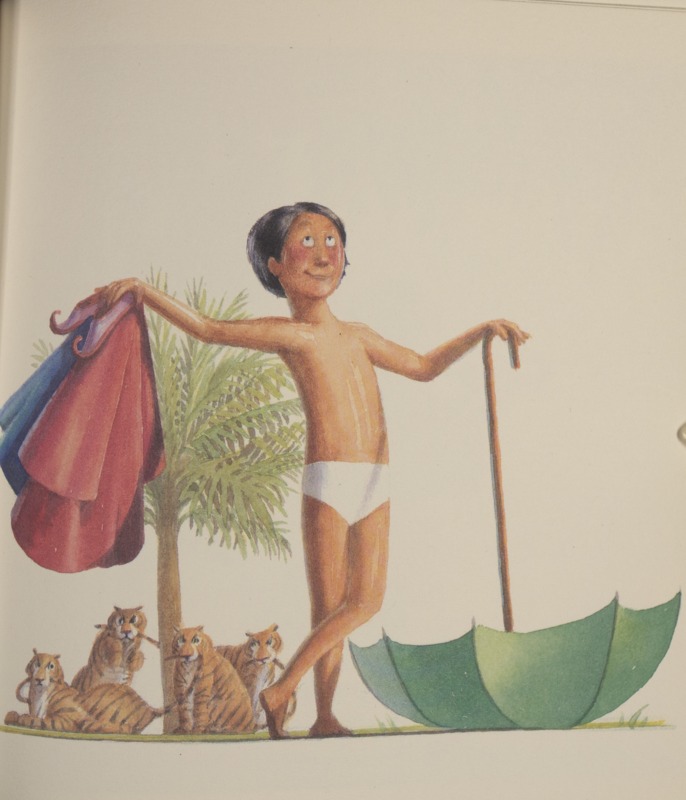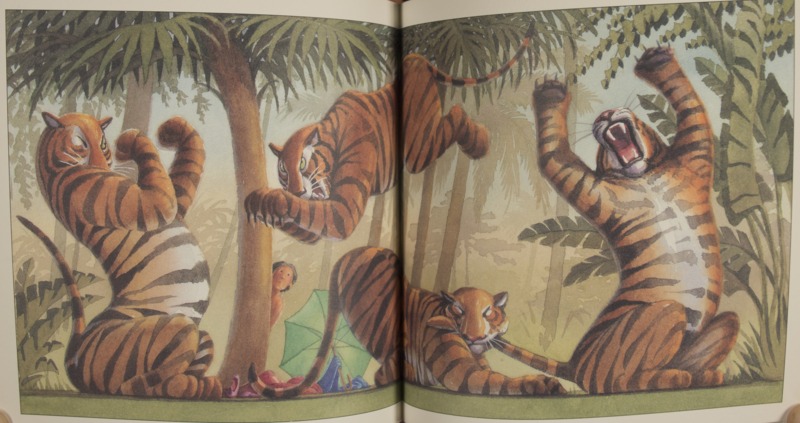The Story of Little Black Sambo is rooted in intense racialized stereotypes of black people and black children in particular. Originally published by Helen Bannerman in the late 19th century, the story displays discriminatory pickaninny caricatures that demoralize and dehumanize black boys. In Little Black Sambo: Revisted, Nina Mikkelson writes that the original illustrations depicted “[Sambo] and his parents [with] large accentuated lips and rolling eyes.” However, newer versions of the story, like The Story of Little Babaji, pictured above, convert the story to a more acceptable and realistic children’s literature.
The images show a boy, Babaji, standing tall with his clothes in one hand and the umbrella in the other. These illustrations show realistic characters instead of racist caricatures like the pickaninny, evident in older versions of the story. In this newer version, illustrated by Marcellino, Babaji has proportioned arms, legs, and feet. His body is the shape of other boys’, not emaciated or couched as some older artists depict, and his face does not have large lips or wide eyes. Instead the character looks like a normal human boy.
Furthermore, this version of Little Black Sambo rejects the dehumanization and animalization that appear in many earlier versions. In the illustration with the four tigers, Babaji stands small behind a tree. The tigers are twice or three times Babaji’s size, a realistic perception of a boy next to mature tigers. This version does not paint the boy as similar to the monstrous tigers like many versions do. Additionally, the tigers have green eyes, which are angled up to give the impression of ferocity, while Little Babaji’s eyes are the opposite; they are small and wide with fear. By not showing any similarities between the boy and the animals, Marcellino tried to “change those stereotypes that were created by writers and authors of the past” (Mikkelsen 264). In many of the older versions, Sambo had exaggerated features characteristic of pickaninnies and other various stereotypes, while in these newer images of Sambo, Marcellino draws him likes any other child and without any ‘‘othering’’ characteristics.
Mikkelsen, Nina. "Little Black Sambo: Revisited." Children's Literature 29.1 (2001): 260-66.

